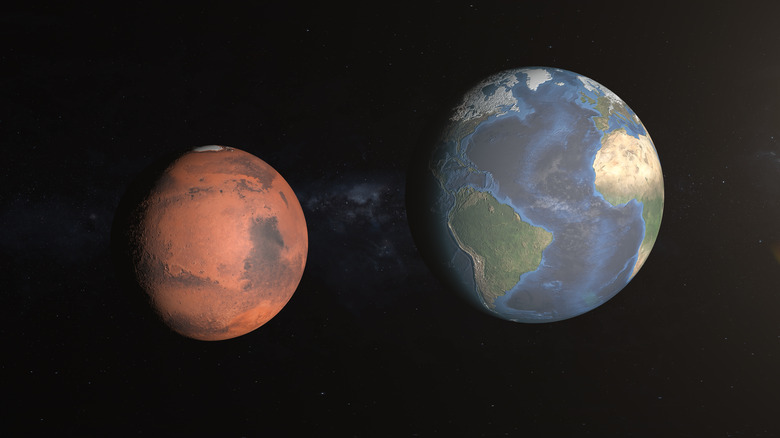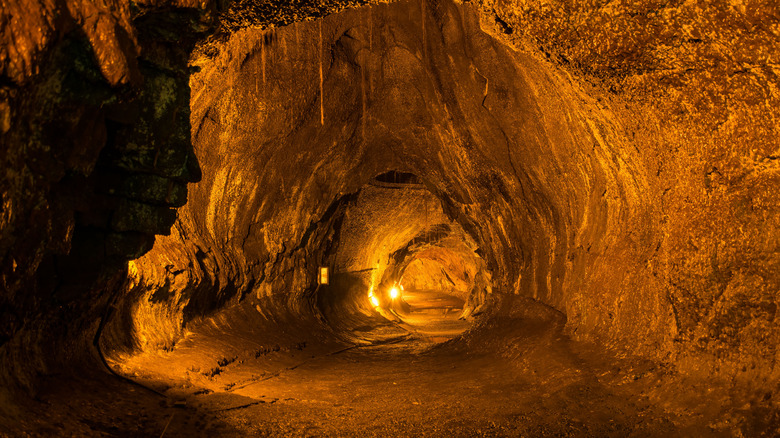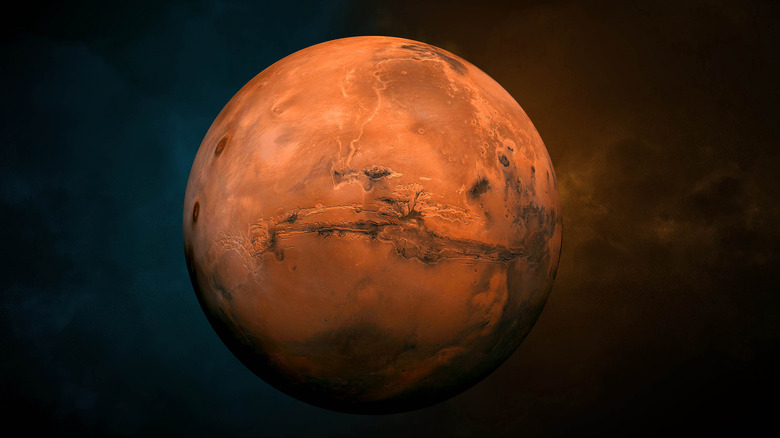Does Hawaii Hold The Secrets Of Possible Life On Mars?
A new study published in Frontiers in Microbiology has revealed that unknown bacteria have been discovered in Hawaiian lava caves (via BGR). Gizmodo explains that researchers studied 70 samples taken from caves, tubes, and fumaroles on the Big Island of Hawaii. These caves were between 400 to 800 years old (per IFLScience). That being said, the RNA in these samples was sequenced to get an idea of the amount of microbial diversity in these structures. As the environments of these caves are incredibly harsh, scientists did not expect to find much. ScienceAlert reports that instead, they found an array of previously undiscovered microbes.
The study noted that "this suggests that caves and fumaroles are under-explored diverse ecosystems." However, Phys.org states that scientists hypothesized that geothermal sites would be less diverse due to their unforgiving environment. Metro writes that these caves are cold, dark, and toxic. In other words, they are less likely to support life. While their assumption was correct, this did lead to another discovery: the bacteria found in each of these sites were distinct from one another. Simply put, each environment produces its own microbial community.
Harsher environments led to more complex interactions
Per Gizmodo, the interactions between the bacteria discovered in the harsher environments were found to be more complex, which puzzled scientists. As one of the study's authors, Dr. Rebecca Prescott, put it (via BGR), "This leads to the question, do extreme environments help create more interactive microbial communities, with microorganisms more dependent on each other." She added, "And if so, what is it about extreme environments that helps create this?" The publication notes that the research team was unable to determine each and every species of microbe found. However, they were able to identify certain bacterias known as Chloroflexi and Acidobacteria (via Phys.org).
According to ScienceAlert, researchers are referring to these bacteria as "hub" species. Prescott believes that they somehow bring other microbes together. Although this is only a theory, Prescott explained that further research could reveal what role these bacteria play in their community and environment. She revealed (per Phys.org), "Overall, this study helps to illustrate how important it is to study microbes in co-culture, rather than growing them alone (as isolates)." That being said, IFLScience reports that these discoveries could eventually lead to an explanation of life on Mars.
Conditions in the cave are similar to conditions on Mars
Metro reports that the Hawaiian lava caves and Mars both have similar inhospitable environments. In fact, at one point, Mars — like Hawaii — had volcanoes and geothermal vents (via IFLScience). If diverse bacteria survived these conditions in Hawaii, who's to say that they didn't once exist on Mars? The study concluded, "With these geological similarities, Hawaiian volcanic environments can provide some insight into the possibility of life on Mars in its ancient past and how microbial communities could survive today on Mars in lava caves, or if introduced from Earth." Per The Washington Post, Mars no longer has an atmosphere.
BGR points out that these bacterial discoveries could also explain how life formed on Mars when its atmosphere still existed. According to Phys.org, this could help us determine if life on Mars could be a possibility in the future. Beyond this, Gizmodo explains that it could ultimately decipher how life began here on earth. ScienceAlert points out that this will likely take years to uncover as 99.999 percent of all microbe species — which are aptly referred to as "dark matter" — are unknown.


